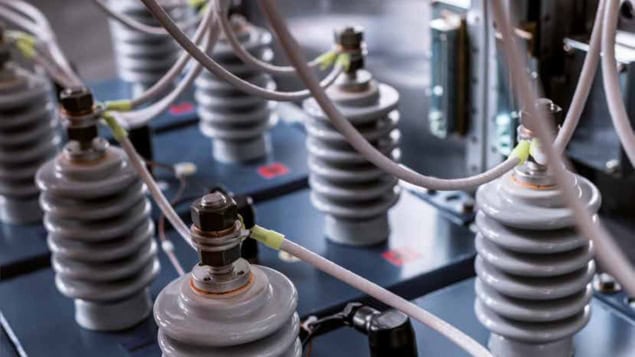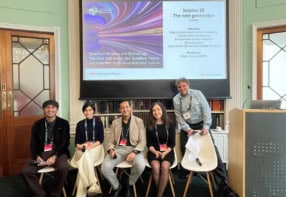Simon Keens warns that the tendering process for supplying scientific equipment to “big science” facilities is threatening small businesses

Big-budget science facilities such as the CERN particle-physics lab near Geneva and the ITER fusion reactor being built in Cadarache, France, are pushing the boundaries of knowledge. Such centres are unique, bringing together thousands of scientists from across the world. They also rely on bespoke specialist equipment that is critical to their operation. Yet the hi-tech businesses supporting these facilities are being threatened by the current economic climate and the need to safeguard public funds when such facilities issue a tender for equipment. The way contracts are defined, awarded and funded is a major issue for small businesses that is now threatening their existence.
Once a company successfully wins a contract bid, it is sometimes paid as little as 10% of the contract value as a down payment to cover the costs of producing all the designs, doing development, sourcing parts, building the kit and covering salaries for the years until delivery. It is often only when the parts are delivered that the firm receive the next payment – typically 60–70% or more of the contract value. About 10–20% is then normally withheld as a warranty performance bond for more than a year. Typically, a profit can only be made between three and five years following a contract. The rest of the time, small businesses are in a “negative cash-flow situation”, where they must pay staff and suppliers up front to realise a profit in the future.
This issue used to be facilitated by bank loans, with the anticipated costs rolled up into the quotation. However, banks are now less willing to make loans to cover negative cash flow. Most big-science projects are not considered credit-worthy by banks as they require unique products that cannot be resold to anybody else should the contract fail. Small businesses are therefore struggling under the twin burden of having to finance their projects with prepayments from other projects and then relying upon the goodwill of their suppliers to accept the same payment terms they were given.
If the status quo continues, the number of suppliers will decline as companies become unprofitable
Some would say this is good for big science as competition ensures good value for the funding body. Well, yes, in the short term, but the situation changes over longer timescales. If the status quo continues, the number of suppliers will decline as companies become unprofitable. This will result in a loss of talented experts and threaten the supply of spare parts for existing systems, representing a blow to institutions that have invested in equipment that should be operable for decades.
Levelling the playing field
So how can we cultivate a healthy business community that supports big science? Firstly, we need to ensure that scientists are closely involved with purchasing teams when deciding who to award a contract to. It is extremely difficult to present a proposal that highlights the nuanced technical advantages of extremely specialist equipment when the tenders are typically awarded by non-technical accountants to the cheapest bidder that ticks most of the boxes. Unfortunately, in tender assessments the price often speaks louder than the details, resulting in a race to the bottom.
My company – Ampegon – has been approached many times by scientists disappointed by other suppliers’ sub-standard equipment that only just meets specification, is unreliable, difficult to use and requires expensive consumables, only to have new contracts for replacements awarded to the same supplier because of a tiny price difference. If tenders focus solely on meeting 80% of the criteria and then looking for the cheapest price, equipment will be made to the absolute minimum possible requirements while businesses are run into the ground trying to compete with each other for the cheapest possible solution.
The requirement that a tender process needs to have multiple bidders should also be left behind. Having to respond to five tenders for each contract simply puts prices up for everyone. It incurs irrecoverable costs that divert the business’s efforts away from contracted projects. Even if two or three companies can supply equivalent products that meet the specifications, the chances are that they will each have strengths and weaknesses that cannot be easily distinguished in a tick-box tender-compliance checklist. If possible, scientific staff should visit manufacturers, make their choice of supplier(s), and then – after per-haps commissioning a design from each – negotiate the price for production with the company offering the best, most functional design. This would preserve the scientific value of proposals while also offering the best value for money.
Finally, and most importantly, we need to level the playing field around the world. There are numerous barriers hindering international co-operation between businesses and science that are often reinforced by government policy. An especially harmful example is the impasse that occurs when a contract is agreed in one currency, and then, two years later when payment is due, the exchange rate has changed. This results in either the supplier making a loss, or conversely, the buyer having insufficient funding to pay in full. There then follows a circus of shadows whereby one party delays either delivery or acceptance, hoping that the exchange rate changes: this can be mitigated somewhat by agreeing smaller, more frequent payments throughout the project. It would also help if facilities could standardize requirements in even some areas. Economies of scale mean that prices would fall and the industrialization of developed technologies would also be easier.
Unless the situation changes, companies supplying the highest specification systems will be driven out of business by cheaper, barely sufficient equipment. This will result in a loss of knowledge and experience, and it will become harder to find suppliers as manufacturers leave for more favourable business sectors. Few small businesses ever became rich from supporting scientific research and we are simply asking that the business environment surrounding big science be modified so survival in it is easier.



